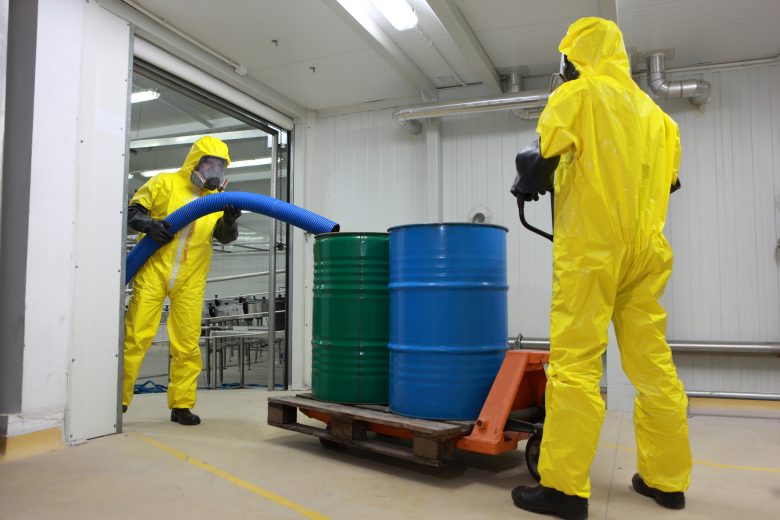When asked to think about PPE, many people form a mental picture of hard hats, steel-toed boots and maybe fall protection harnesses. But in the chemical industry, things can be a little more complicated.
The chemical industry processes numerous raw substances into tens of thousands of other materials that we use in all sorts of products from food to pesticides. Because the industry deals with many different materials, its workers are constantly exposed to numerous types of hazards, which generally fall into three categories: chemical, biological and physical.
Deciding what type of safety equipment is required by employees working with chemicals will heavily depend on the substances involved and the job they’re performing. The length of possible hazard exposure the hazard exposure levels should also be considered. The good news is that chemicals have safety data sheets that provides recommendations for adequate protective equipment.
In addition to paying attention to PPE requirements as mandated by legislation and safety data sheets, here are three additional issues to consider.
Safety training and safety culture
The sheer number of possible hazards drives home the importance of PPE in the chemical industry. This is why safety training is so vital because just like in any other industry, providing the best PPE is no guarantee that the workers will use it.
Safety training not only ingrains in workers the importance of PPE, but it can also nurture a safety culture and help employees understand that safety is about making safe decisions and not just about compliance. If people feel that their bosses are genuinely concerned with workplace safety and they’re not just numbers on a sheet, they will be more likely to follow the rules.
Making sure that everyone—including organizational leaders—wears PPE is also paramount to fostering a strong culture of safety. If management chooses not to wear PPE when coming by or performing even a short inspection, this sends a loud message that the rules don’t apply to everyone and it eats away at a safety culture like acid.
Changing with the times
It’s important for EHS professionals to keep on top of relevant changes to PPE, including updates to regulations and standards change, product improvements, and the publication of new information and research.
If a new, better version of PPE is purchased for workers, new training should be provided with it. The same applies to employees who were moved from one task or area to another and now require a different set of PPE. Having a colleague explain it to them quickly is not safety training—proper education from a safety professional is necessary.
Addressing the human factors
Last but not least, workers in the chemical industry have to contend with a variety of human factors that affect whether or not they wear PPE when they need it. Adequate safety training concentrates on equipment and materials. If they’re stressed, rushed, fatigued or complacent, a small decision like using PPE can turn into a major incident if workers don’t have the skills to deal with these issues.
Human factors training will also help with other aspects of chemical safety too. For example, if a drum filled with chemicals starts leaking, error reduction training will help employees not only follow the protocol but do it calmly and responsibly. Training would also help them become more mindful of their surroundings and incorporate it into their life outside of work, making safety a 24/7 habit.

